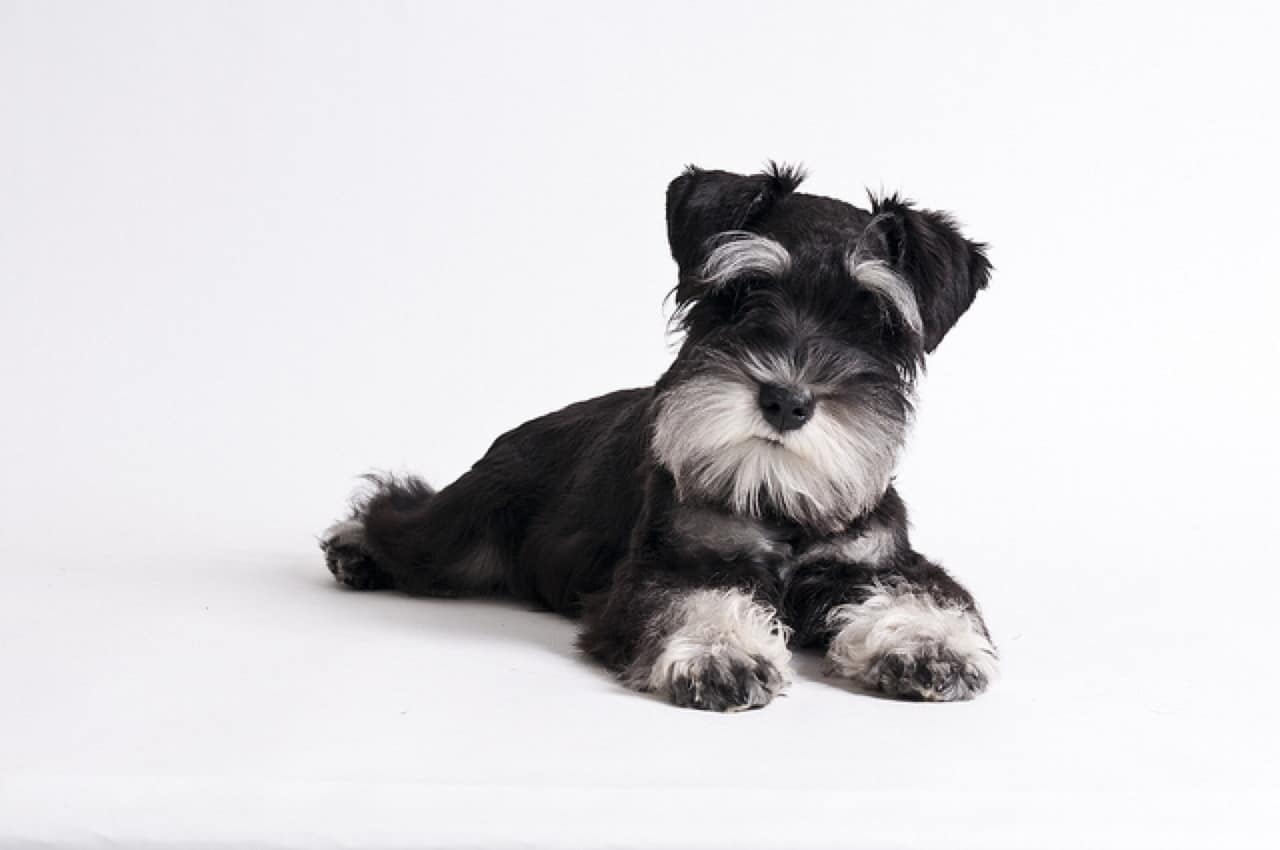The best time to clip your Miniature Schnauzer’s nails is immediately after a bath because the water will have softened the nails, and your Schnauzer may be tired out and relaxed by the bath. Nail trimming is recommended every two weeks, using nail clippers or a nail grinding tool. Trimming nails is crucial to maintaining the Miniature Schnauzer’s normal foot shape. Long nails can permanently damage a dog’s feet; the tight ligaments of round, arched feet will break down more quickly. If your dog’s nails are clicking on the floor, they need trimming.
Your schnauzer should be accustomed to having his nails trimmed at an early age because it will be part of your maintenance routine throughout his life. Not only do neatly trimmed nails look nicer, but long nails can unintentionally scratch someone. Also, long nails have a better chance of ripping and bleeding, or causing your Schnauzer’s toes to spread.
Before you start clipping, make sure you can identify the quick in each nail (the vein in the center of each nail). It will bleed if it is accidentally cut, which will be painful for your dog since the quick contains a web of nerve endings. Keep some type of clotting agent on hand, such as a styptic pencil or powder (the type used for shaving). This will quickly stop the bleeding when applied to the end of the cut nail.
Do not panic if this happens, just stop the bleeding and talk soothingly to your dog. Once he has calmed down, move on to the next nail. It is better to clip a little at a time, particularly with dogs who have dark nails, where the quick isn’t easily visible.
Hold your dog steady as you begin trimming his nails; you do not want him to make any sudden movements or run away. Talk to him calmly and stroke him as you clip. Holding his foot in your hand, simply take off the end of each nail in one quick clip.
You can purchase nail clippers that are specifically made for dogs at pet-supply stores. There are two predominant types of clippers. One is the guillotine clipper, which is a hole with a blade in the middle. Using this tool, squeeze the handles so that the blade meets the nail and chops it off. It sounds gruesome, and for some dogs, it is utterly intolerable. The other is the scissor-type clipper, which are gentler on the nail. The important thing to make sure of is that the blades on either of these clippers are sharp. Once the nails are at the desired length, use a nail file to smooth the rough edges so they don’t catch on carpeting or outdoor debris.
A third option is a cordless nail grinder fitted with a fine grade sandpaper cylinder. Stone cylinders are more prone to heat buildup and vibration. When grinding, use a low-speed (5,000 to 10,000 rpm). Hold your dog’s paw firmly in one hand, spreading the toes slightly apart. Touch the spinning grinder wheel to the nail tip
for one or two seconds without applying pressure. Repeat if necessary to remove the nail tip protruding beyond the quick. Grinders have the added benefit of leaving nails smooth and free of sharp, jagged edges that traditional nail clippers leave behind.
If the procedure becomes more than you can deal with, just remember: Groomers and veterinarians charge a nominal fee to clip nails. By using their services your dog won’t spend the night glowering at you.
When inspecting paws, you must check not only your dog’s nails but also the pads of his paws. Check to see that the pads have not become cracked and always inspect between the pads to be sure nothing has become lodged there. Depending upon the season, there may be a danger of grass, seeds, thorns or even tar from the road. Butter, by the way, is useful in removing tar from your Miniature Schnauzer’s feet.

